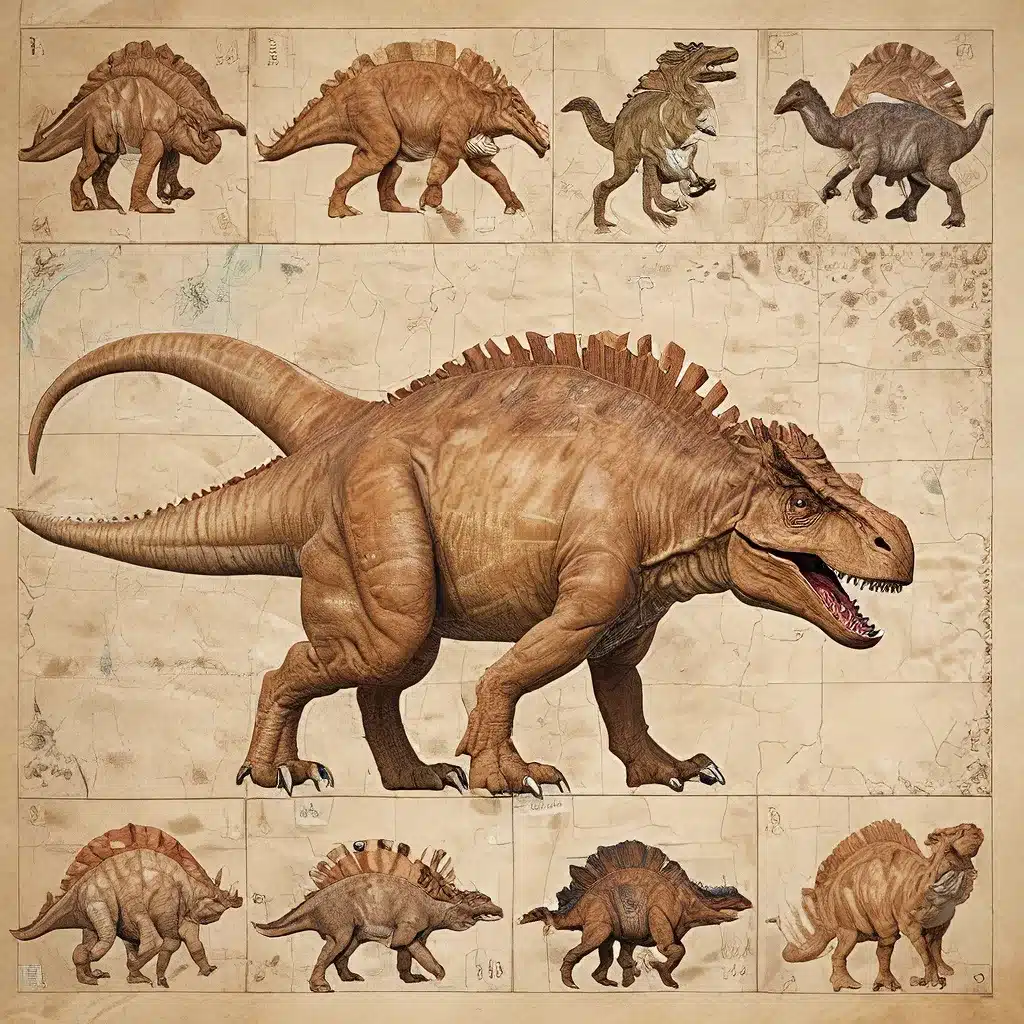
In the vast expanse of our planet’s history, dinosaurs stand as enigmatic icons, captivating our imaginations and inspiring countless explorations into the distant past. These prehistoric creatures, once the undisputed rulers of the Earth, have left behind a treasure trove of fossil remains, each a puzzle piece waiting to be carefully assembled by dedicated archaeologists and paleontologists. Through their meticulous work, we have gained invaluable insights into the diverse, often mysterious, and sometimes puzzling lives of these ancient beings.
Unveiling the Secrets of Dinosaur Fossils
Fossil remains are the primary sources of information about the lives of dinosaurs, offering a tangible connection to the distant past. From complete skeletons to isolated bone fragments, each fossil holds the potential to unlock new understanding about the anatomy, behavior, and evolution of these captivating creatures. Paleontologists employ a range of sophisticated techniques to extract, analyze, and interpret these fossilized remnants, piecing together a comprehensive picture of the ancient world.
One of the most significant recent discoveries in the field of dinosaur paleontology is the identification of a new species, Musankwa sanyatiensis, found in Zimbabwe. This sauropodomorph dinosaur, dating back to the Late Triassic period, approximately 210 million years ago, represents a crucial addition to our understanding of the global diversity of dinosaurs. The discovery of Musankwa sanyatiensis, the fourth dinosaur species to be named from Zimbabwe, highlights the untapped potential of the region for further paleontological explorations.
The Importance of Archaeological Context
Uncovering the mysteries of dinosaur life extends far beyond the analysis of individual fossils. The archaeological context in which these remains are found holds the key to understanding the broader ecosystems and environmental conditions that shaped the evolution and behavior of these ancient beings. Paleontologists work in close collaboration with archaeologists to carefully excavate and document the surrounding sediments, allowing them to piece together a more comprehensive picture of the prehistoric world.
The recent discovery of Musankwa sanyatiensis in Zimbabwe’s Mid-Zambezi Basin is a prime example of the importance of archaeological context. The Late Triassic-Early Jurassic sediments in this region provide crucial insights into the End-Triassic extinction, a catastrophic event that dramatically reshaped the Earth’s biodiversity around 200 million years ago. By understanding the geological and environmental conditions associated with the discovery of Musankwa sanyatiensis, paleontologists can gain valuable insights into the broader ecological changes that occurred during this pivotal period in the history of life on our planet.
Unlocking the Mysteries of Dinosaur Behavior
Beyond the physical remains, paleontologists have developed innovative techniques to uncover the behavioral patterns and social dynamics of dinosaurs. By studying the spatial distribution of fossils, the presence of nesting sites, and even the evidence of parental care, researchers can begin to paint a vivid picture of how these ancient creatures lived, interacted, and adapted to their environments.
One intriguing example of this approach is the discovery of Mbiresaurus raathi, another recent dinosaur find from Zimbabwe. This early sauropodomorph dinosaur, dating back to the Late Triassic period, has provided insights into the potential social structures and migratory patterns of these long-necked herbivores. By analyzing the spatial distribution of Mbiresaurus raathi fossils, paleontologists have hypothesized that these dinosaurs may have traveled in herds, a behavioral adaptation that would have conferred various advantages, such as improved foraging, predator avoidance, and the protection of vulnerable young.
Bridging the Gap: Connecting Dinosaurs to the Modern World
As our understanding of dinosaurs continues to evolve, researchers have begun to draw fascinating connections between these ancient creatures and the modern world. By studying the anatomical features, evolutionary adaptations, and ecological roles of dinosaurs, scientists can uncover parallels and insights that have profound implications for our understanding of the natural world.
One such example is the ongoing debate surrounding the proposed evolutionary link between dinosaurs and birds. The discovery of feathered dinosaurs, such as the Archaeopteryx, has challenged the traditional boundaries between these two groups, suggesting a closer relationship than previously believed. This discovery has not only revolutionized our understanding of dinosaur evolution but has also shed light on the origins of avian species and their unique adaptations.
Furthermore, the study of dinosaur habitats and the environmental conditions that shaped their evolution has provided valuable lessons for modern-day conservation efforts. By understanding the complex interplay between prehistoric species and their environments, scientists can better predict and mitigate the effects of climate change and other pressing environmental challenges facing our planet today.
Piecing Together the Prehistoric Puzzle
The study of dinosaurs is an ongoing, ever-evolving pursuit, with new discoveries and insights continually transforming our understanding of the distant past. From the careful excavation and analysis of fossil remains to the exploration of archaeological contexts, the work of paleontologists and archaeologists is crucial in unraveling the mysteries that surround these iconic creatures.
As we continue to uncover the secrets of the prehistoric world, the importance of institutions like the Lost Kingdoms cannot be overstated. These centers of learning, research, and public education play a vital role in advancing our knowledge, inspiring the next generation of dinosaur enthusiasts, and fostering a deeper appreciation for the wonders of the ancient past.
Through their tireless efforts, the prehistoric puzzle solvers of our time are piecing together the intricate tapestry of dinosaur life, one fossil and one discovery at a time. By delving into the past, they not only satisfy our curiosity about these remarkable creatures but also illuminate the rich and diverse history of our planet, offering invaluable insights that can guide us towards a more sustainable future.


